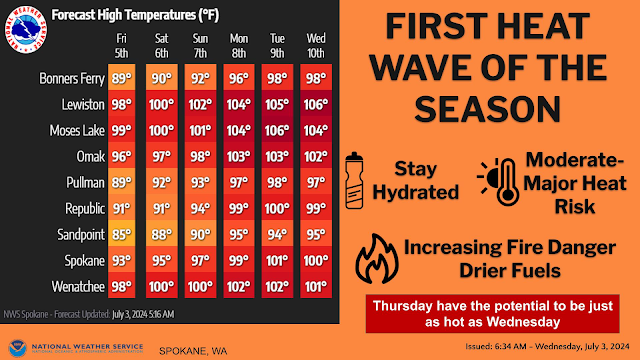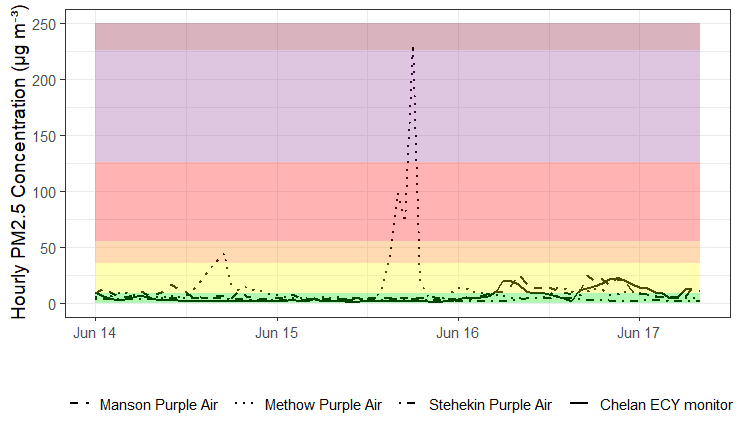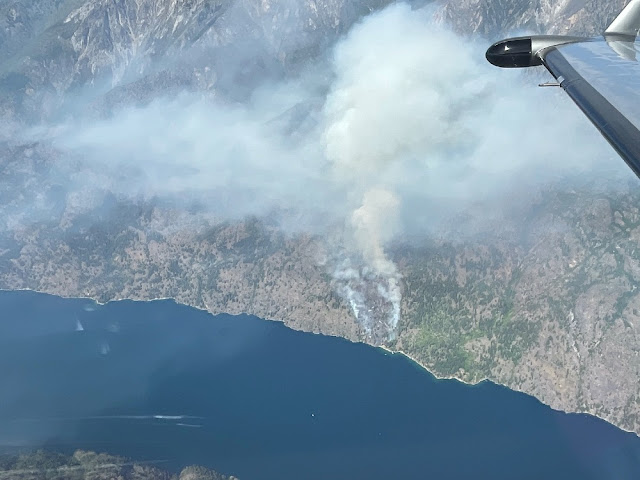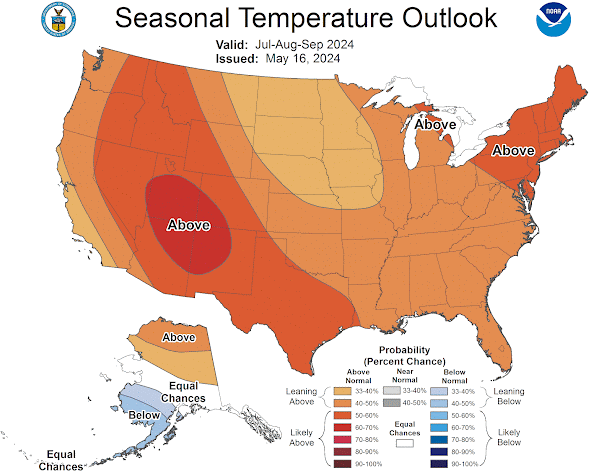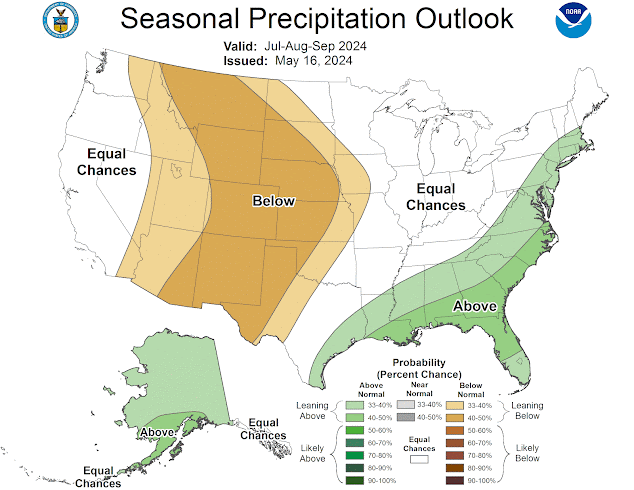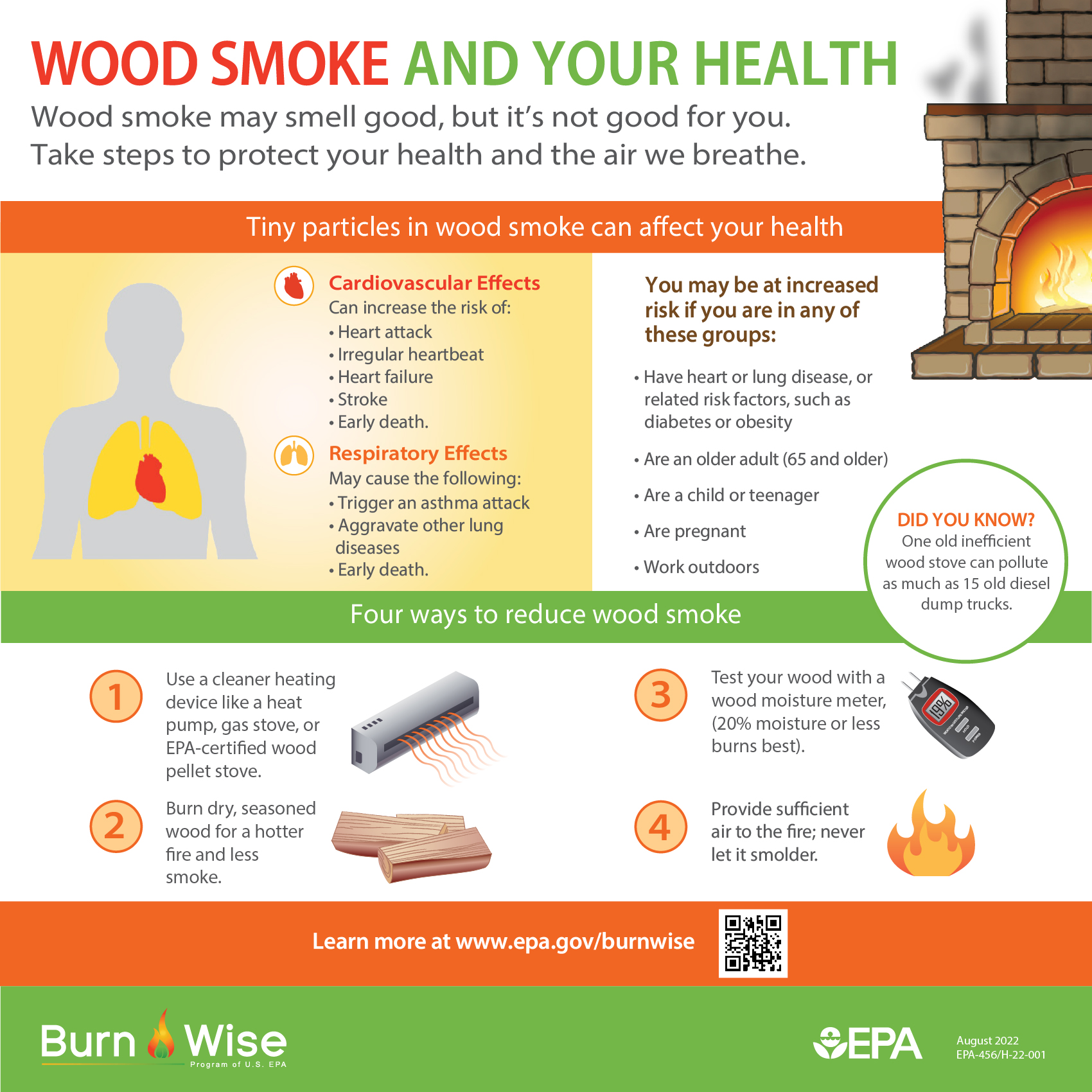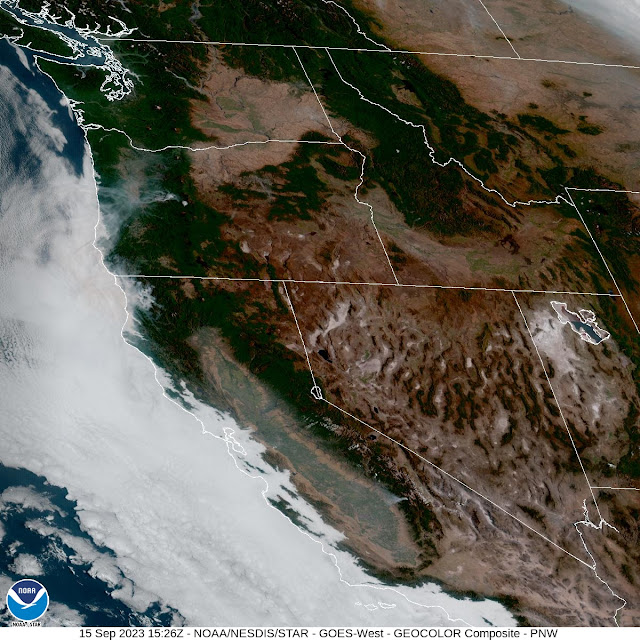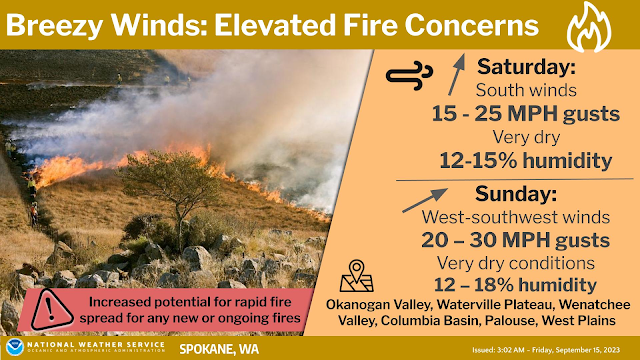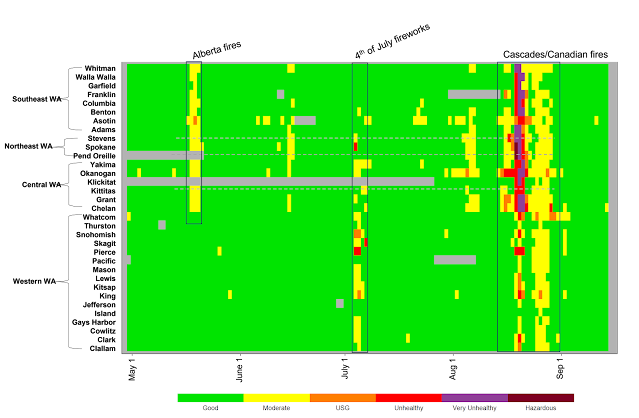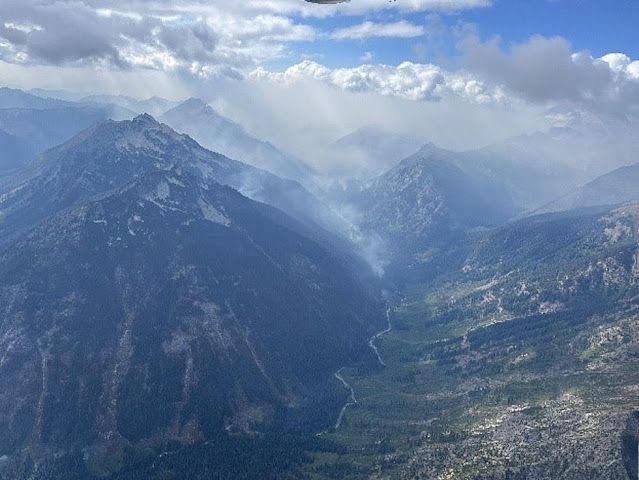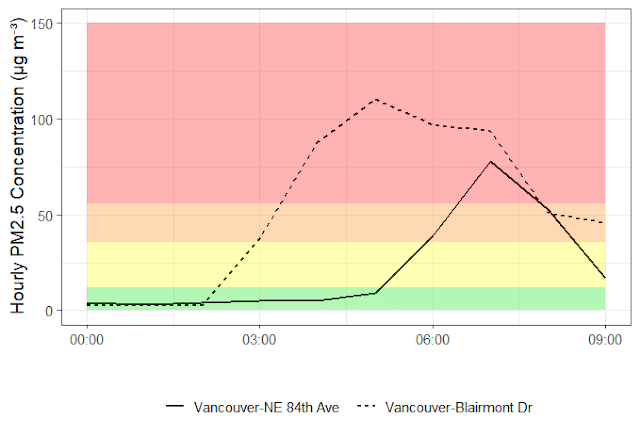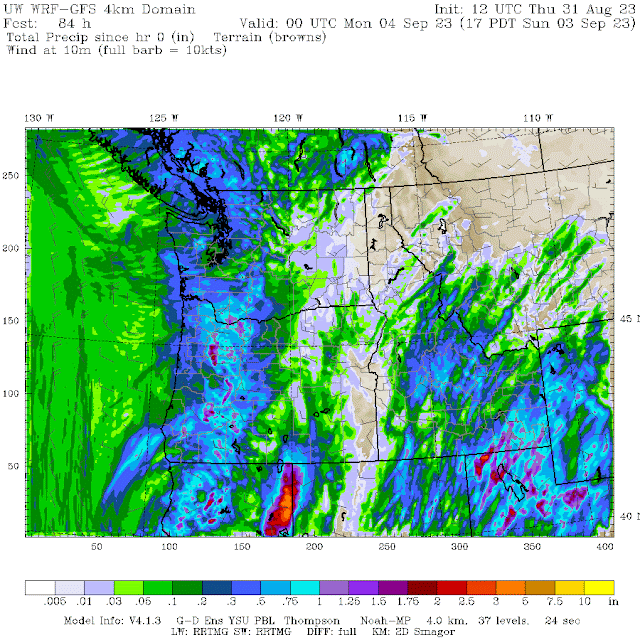Since wildfire season will be here soon, now is the perfect
time to ensure you and those around you are prepared. Getting #SmokeReady—the
focus of this week—means identifying personal health concerns, learning ways to
protect your indoor air, and knowing where to find up-to-date information about
wildfire smoke.
Over the course of #SmokeReadyWeek, WA Smoke Blog partners
will be posting on social media in line with daily themes:
- Monday, June 10: Learn about smoke
- Tuesday, June 11: Stay informed about smoke
- Wednesday, June 12: Smoke and your health
- Thursday, June 13: Minimize exposure to smoke
- Friday, June 14: Prevent smoke
Luckily, if you’re reading this, you already know about the
WA Smoke Blog: the state’s leading public resource for wildfire smoke
information. This site features a map with Air Quality Index (AQI) values from
monitors and sensors that measure PM2.5 across the region. In addition to
current air quality conditions, the map also shows a smoke forecast for the
next five days. When using this tool, please remember to check the forecast
regularly, as conditions can change very quickly.
Below the map, there are tabs for the latest smoke
information, local smoke outlooks, and external resources. Here, you can find
additional sources on monitoring, forecasting, and fires, and details about the
health impacts of wildfire smoke. The Department of Health’s wildfire
smoke page is an excellent place to go if you have any questions or
concerns about keeping yourself safe this summer.
In the days and weeks to come, be sure to familiarize
yourself with the resources listed here on the WA Smoke Blog. Preparing early
reduces the stress of wildfire season, so please share this information to help
others get #SmokeReady!
2024 Wildfire & Smoke Outlook
Wildfire smoke is a risk every year, but the extent to which
it affects Washington residents depends on the severity of fire season
throughout the Pacific Northwest. The
brief overview for the season is that we are expecting a quick start to wildfire season and slightly more active season than normal across Washington and British Columbia. In contrast, the season could be less active than normal across Oregon and California, especially in the first half. With the enhanced local wildfire risk, smoke impacts are possible too, but small-scale details cannot be known in advance and
will instead be updated in future blog posts. Continue reading for a more detailed
discussion of the factors at play heading into fire season.
Drought & Precipitation: Some Areas of Improvement, Other Areas of Concern
A contributing element to wildfire season is the level of drought
across the region. Thinking back to last fall, much of the PNW was experiencing
some level of drought. Here in Washington, the central and northern Cascades were
particularly impacted, experiencing extreme drought at that time.
Drought
map of the western U.S. in late September 2023. Courtesy
droughtmonitor.unl.edu.
Since then, normal to above normal precipitation has alleviated
drought in some areas, especially in Oregon where drought has essentially been
eliminated completely heading into this summer. The situation in Washington is less
optimal with most parts of the state remaining drier than normal over the last 5
months, especially the central/northern Cascades and Blue Mountains where
precipitation has only been 50-70% of normal since January 1. As a result,
these areas maintain moderate drought status heading into the summer. It’s
worth noting that abnormal dryness also extends across the border into much of
British Columbia.
Percent
of average precipitation for the western U.S., January 1 to June 4, 2024. Courtesy
the Western Regional Climate Center (WRCC).
Drought
map of the western U.S. in early June 2024. Courtesy droughtmonitor.unl.edu.
Snowpack
Snowpack is another important factor to consider when determining how early or late in the season that mid-high elevation forests will be
available for burning. Above average snowpack will take longer to melt out and
can often delay fire concerns until later in the season. With that in mind,
there is a relatively lower than normal risk of fire during at least the first half of the
season across the mountains of Oregon and California because of their near to above normal snowpack. In
Washington however, snowpack is generally poor heading into summer, especially
across the central and northern Cascades where snow water equivalent (SWE)
values are generally only 35-80%. As a result, many of
Washington’s mid-high elevation forests will be snow-free at some point in June and could make
fuels available to burn sooner than normal, especially if dry and warm weather
persists for extended periods of time. Communities on the east slopes of the Cascades are a particular concern for this season because precipitation deficits are most significant in these areas. They have not received much of the beneficial precipitation that fell across much of Western Washington in recent weeks.
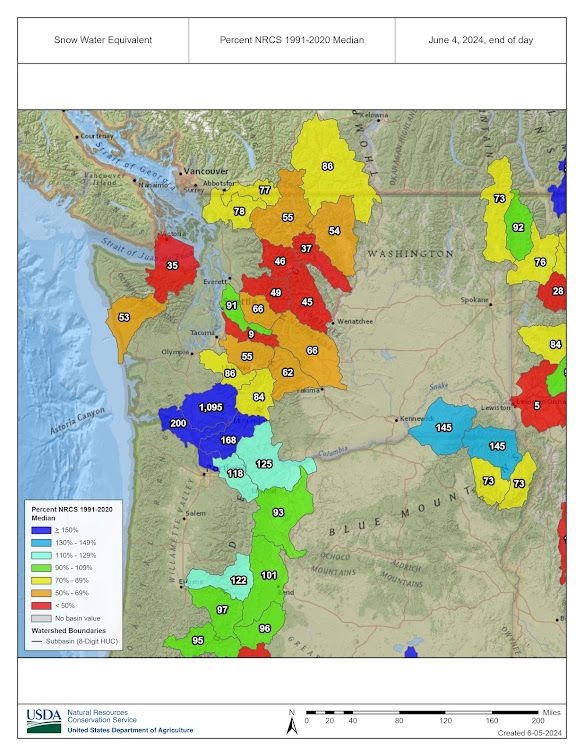
Snow
water equivalent percentage across various watershed sub-basins in WA & OR on June 4, 2024. Courtesy the Natural Resources Conservation Service
(NRCS).
Temperature Outlook
Seasonal temperature outlook valid July/August/September 2024. Courtesy the Climate Prediction Center (CPC).
From a temperature perspective, the highest risk for above
normal temperatures will be over the desert southwest this summer. But much of
the western U.S. is projected to see a warmer than normal
July/August/September. Here in Washington, there is a 40-50% chance of above
normal temperatures in Western Washington and a 50-60% chance of above normal
temperatures in Eastern Washington. This basically means that we’re more likely
to see a warm summer than a cold summer, and that’s especially true across eastern
Washington. Still, a really hot summer is not guaranteed.
Precipitation Outlook
Seasonal precipitation outlook valid July/August/September 2024. Courtesy the Climate Prediction Center (CPC).
From a precipitation standpoint it’s important to note that
summer in the Pacific Northwest is typically dry in a normal year. Fuels
will become drier and increasingly available to burn over the summer even if
some moisture makes it into the area from time to time. Speaking of which, long-term
signals for July/August/September are mixed for how much precipitation will
fall across the PNW, with most of Washington in a coin toss for above or below
normal precipitation. Putting this into context, we might see some moisture
cross the region, occasionally reducing fire danger, but there is no indication
that seasonal wildfire risk will be stifled by consistent rain.
Putting it All Together
In most of Washington and British Columbia, factors such as below average
snowpack and likelihood of above normal temperatures suggest a quicker than normal start to fire
season and a slightly more active season overall. In contrast, California and Oregon had good water years, likely keeping fire activity around normal or below normal during the first half of the season.
The second half of the season looks a bit different. By August, warmer than
normal temperatures should allow Oregon and California to begin ‘catching up’ in fire activity as
heavier fuels finally dry out and become available to burn.
Furthermore, lower-mid elevation areas in California have seen increased grass
and shrub growth this year from a wet late winter and spring. These fuels will dry out over summer adding fuel loading for potential higher intensity late season fires. With these factors in mind and IF enough ignitions occur, we’re set up to see near to above normal wildfire activity across the west coast during the second half of fire season. It’s
also worth noting that a developing La Nina may delay or reduce the late fall and early
winter rains in California, potentially extending fire season later into
October and November for that region.

Outlook for significant wildland fire
potential, July, August, September (left to right).
Courtesy Predictive Services, National Interagency Fire Center (NIFC).
More to Come
While this outlook frames
possibilities for the upcoming fire season, it is not possible at this time to make accurate predictions
of wildfire locations, acreage burned, or air quality values. Even
if conditions suggest high fire potential, wildfires don’t start without
ignition sources (lightning or human-caused) and this can make a big difference in what kind of season we ultimately have.
Additionally, short-term weather patterns play a critical role in determining
fire spread, fire suppression possibilities, smoke production, and smoke
transport across the region. That’s where the smoke blog comes in -- we’re here
to provide information about wildfires and smoke every step of the way. Stay
tuned for more updates as summer heats up!
